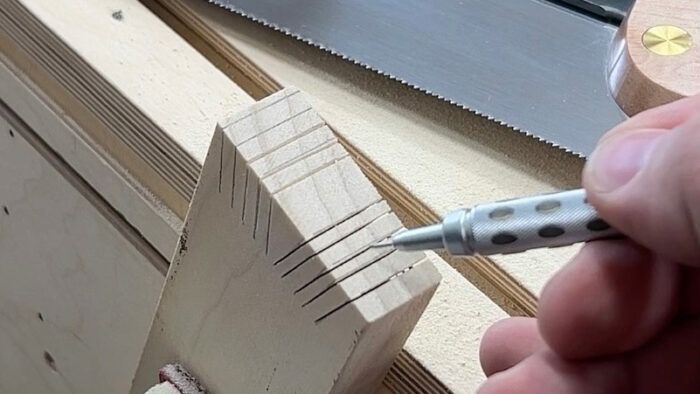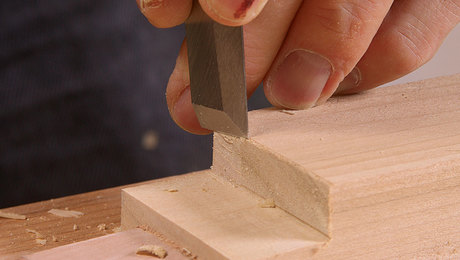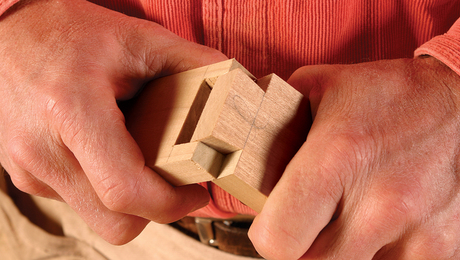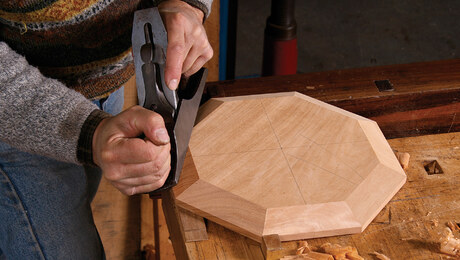Atomic Woodworking: Mastering Craft Through Incremental Practice
The seemingly overwhelming journey toward woodworking mastery daunts many novice woodworkers.
I recently read a book called Atomic Habits, and it got me thinking about how some of the tenets of the book could be applied to woodworking. Woodworking marries precision with creativity. The seemingly overwhelming journey toward mastery daunts many novice woodworkers. Yet, the path to becoming a better woodworker starts not with grand gestures but with small, incremental steps. Atomic woodworking is where tiny doses of practice add up to heaps of expertise.
Atomic woodworking suggests that just as a small financial investment grows exponentially over time, so does your success in woodworking with consistent, deliberate practice. The idea is simple: commit to regular, bite-sized sessions of training and watch as your skills shoot through the roof.
Imagine starting with the most basic woodworking technique: sawing. By dedicating just ten minutes a day to refining your sawing technique, you begin to develop an intuitive understanding of wood grain, pressure, and motion. It’s as easy as taking ten minutes in the shop to mark some lines on a piece of scrap and practice sawing to those lines. Over weeks and months, those seemingly insignificant increments of time add up, and soon, you find yourself effortlessly producing perfectly straight and plumb cuts.
From sawing, you move on to more complex tasks: cutting and shaping wood or joinery. Each skill builds upon the last, and with consistent practice, you gradually unlock new levels of proficiency.
The beauty of atomic woodworking lies in its accessibility. You no longer need to set aside hours at your bench to make progress. Instead, you can integrate practice into your shop time. Take 30 minutes at the start of your session to sharpen your chisels or spend some time hand planing a board; every minute contributes to your journey toward mastery. I think the key is not to do your practice on a project you’re working on. There is already pressure on you to make a thing beautiful, so that is not the time to get your practice.
But atomic woodworking is not just about quantity; it’s also about quality. Each practice session should be approached with intention and focus. Don’t just mindlessly saw to the lines and call it done. Saw one line, then inspect what you did. Did you saw on the line? Did your cut start to lean one way or the other? If so, how much and in which direction? Then, when you approach the next line, think about what you have to do to correct the problem. If your cut wanders to the right, put effort into leaning the top of your saw slightly to the right to have it cut straight.
Going forward, you can apply these practice techniques when you are learning a new skill. Want to learn how to cut a groove using a router? Mill up some practice pieces and give it a try on scraps of wood that don’t matter. You will gain the confidence and practice you need to make the real thing a success.
One of the most rewarding aspects of atomic woodworking is the sense of progress it instills. As you look back on your journey, you’ll be amazed at how far you’ve come from those humble beginnings. What once seemed daunting and out of reach is now within your grasp. So head into the shop with the intent to become better at woodworking, and you likely will. As I always say, “To understand, you must do”!






















Comments
As New Yorkers say when tourist ask "how do I get to Carnegie Hall", practice, practice, practice. You can watch all the videos and read all the books but you still won't be proficient until you have done it and usually a number of times. Nailed it Vice.
Be Safe and have fun
Very thoughtful. I always enjoy Vic's commentaries
"Atomic woodworking suggests that just as a small financial investment grows exponentially over time, so does your success in woodworking with consistent, deliberate practice".
A very good article, this .... but the above simile is a very poor one to support the points expressed in the article. A financial "investment" requires no effort, skill or learning to grow.
Getting better at woodworking is indeed an incremental or atomic process but it requires not just lots of practice doing things "atomically" oneself but lots of persistence to continue that doing.
In short, to get the atomic reaction going and to keep it going requires a certain fissionable mental material - the ability to get beyond the now commonplace short little attention span and the drive to persist in acquiring ever more skills for often long periods of months and years.
I know dozens who have lots of innate ability but fail because they have that modern desire for instant gratification which, when it isn't satisfied after an hour ineptly wielding a new tool, causes a drift of interest to something "quicker and easier".
Before they know it, they're going to IKEA and feeling proud of their ability to wield an allen key. :-)
Lataxe, still fissioning.
Log in or create an account to post a comment.
Sign up Log in